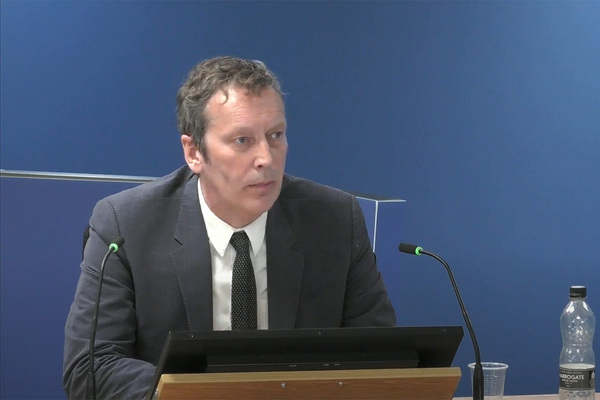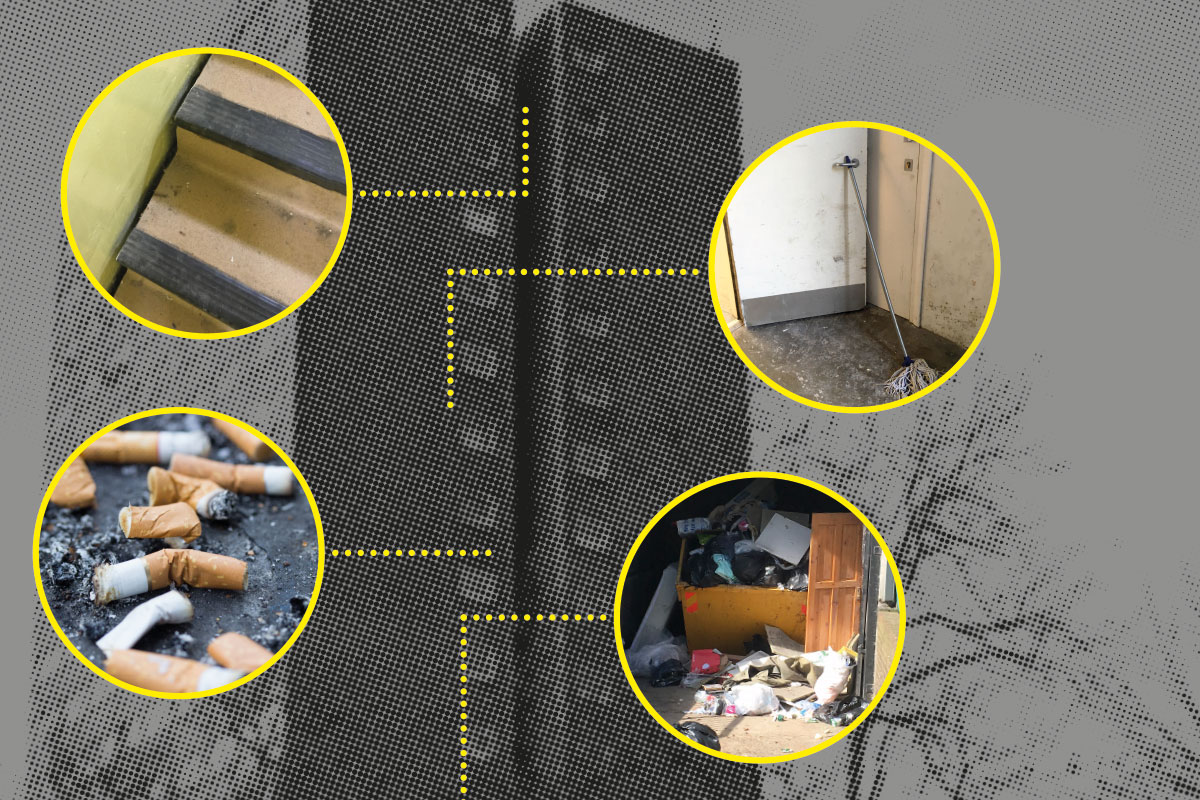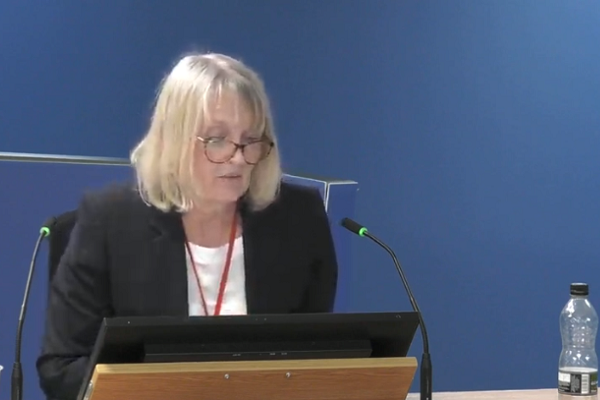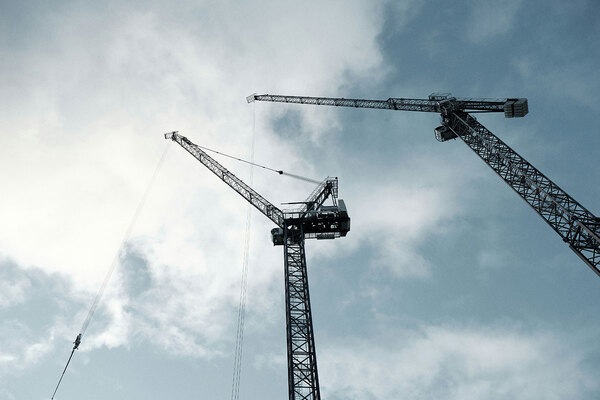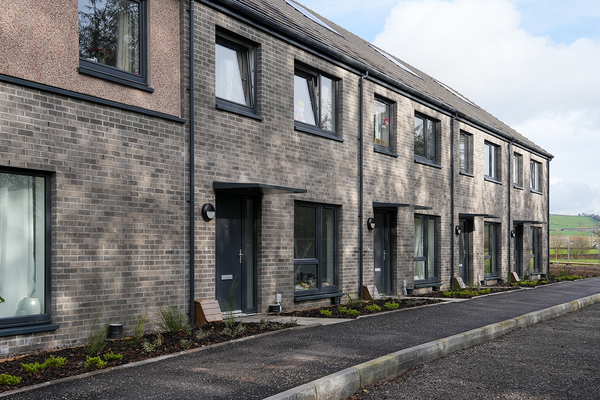You are viewing 1 of your 1 free articles
The secret life of a fire risk assessor: whistleblower warns of culture of cover-up
Fire risk assessors are being put under pressure to play down risks, with major issues being covered up as a result, a whistleblower tells Peter Apps. Illustration by Joe Wilson
Jonathan* wants to talk. He phones Inside Housing out of the blue and almost immediately launches into a monologue.
What concerns him is fire risk assessments. He has worked in the sector as an assessor for more than a decade and believes the system is failing.
What he says is concerning, revealing and plainly in the public interest. But there are problems. Simply put, Jonathan doesn’t want to be identified. And listing the full details of what he describes would make it obvious within the small world of risk assessment who he is.
Therefore, Inside Housing has decided to take the unusual step of publishing his views anonymously. We have verified that he worked at the places he says he did, at the times he says he did. We have tested his evidence with others familiar with the industry, who say it rings true. But we cannot completely verify his claims without identifying him.
“There were numerous times when the fire safety team would be placed under huge amounts of pressure to change reports”
Nonetheless, the picture he paints is of a system that is broken and placing residents at risk. It is one on which much reliance is placed and could not be of more importance to the social housing sector, so we have decided to tell his story.
Jonathan began his career at a large local authority as part of a five-person in-house team. He began by shadowing a more senior assessor for a year – something he describes as “good”, because it allowed someone to double-check the work.
But he quickly began to realise the system was not working as it should. “There were numerous times when the fire safety team would be placed under huge amounts of pressure to change reports,” he says.
‘You’re not independent’
A significant example was when the authority procured a new contractor to replace fire doors. When the safety team checked the doors, they were not up to standard: failing to shut and poorly installed. But nothing was done. “We were ignored because it was too much trouble to deal with a contractor that wasn’t performing,” he says. “That would happen numerous times.”
“We had a disastrous roll-out of sprinklers, when the contractor literally damaged every single compartment wall in every single old people’s home at that time,” he says. “But one of the problems that you’ve got is you’re not independent, you’re working within a hierarchy and, quite often, you don’t have any authority.”
This really hit home for Jonathan when he assessed a supported living facility for adults with learning difficulties.
“I was expecting them to be talking to me about a programme of how they could best approach this so that they could mitigate the risk, but actually they started shouting at me, literally shouting, saying, how dare I produce this report”
“The manager had already been in touch with me to say she had real concerns that she had inadequate staff to safely evacuate people,” he says. “But when I assessed the building, it transpired that, over time, it had been changed from the original design. There was an escape route corridor which wasn’t protected.
“There were lots of other things: locks on individual bedroom doors, so that people wouldn’t have been able to get out if there had been a fire at night. The idea was that the manager would come along and unlock all of these doors.
“There were residents who had wheelchairs and had no means to get out, or there was a ramp that finished in steps, so they would have only been able to get so far.
“The report was duly completed and it was marked as high, high risk.”
Jonathan felt he had done a thorough job. He expected the issues to be addressed promptly, even perhaps to be praised for his vigilance. He was to be disappointed.
“I was called to a meeting with the director of adult social services,” Jonathan recalls. “The director of property, my manager, got wind of the fact that this wasn’t going to be a great meeting and came to support me.
“I was expecting them to be talking to me about a programme of how they could best approach this so that they could mitigate the risk, but actually they started shouting at me, literally shouting, saying, how dare I produce this report.”
The experience startled him. “I was gobsmacked, really. I just didn’t know what I’d done wrong here. This is what I should be saying. If someone can’t get out of a building, they can’t get out of the building.”
“They said some of the language was inflammatory, but it was just the truth,” he says. “I’m saying this person can’t get out because you’ve got a lock on their door.”
The manager who had raised concerns was moved out of the home. “It’s frightening, because that’s basically what happens. People aren’t protected for whistleblowing at all,” says Jonathan.
The facility remained open, with the concerns unaddressed, for five years before closing for other reasons.
Eventually, Jonathan left the local authority’s team and went freelance, picking up contracts with local authorities and housing associations. The problems did not go away.
At one large London borough, a key performance indicator was in place to reduce the number of buildings found to be subject to ‘high-risk’ issues. However, this created a perverse incentive to downgrade important issues.
“They would say to the assessors, ‘We have got however many high risks, can you downgrade any of those?’ Because they didn’t want to go to board meetings and say, ‘We’ve got 36 buildings that have got high risk,’” says Jonathan.
“They would say to the assessors, ‘We have got however many high risks, can you downgrade any of those?’ Because they didn’t want to go to board meetings and say, ‘We’ve got 36 buildings that have got high risk’”
He worked as part of a fire safety team, under a fire safety manager who reported to a director. “There was an absolute bullying culture in there,” he recalls. “There was this sort of fear culture. They [managers] would slate particular risk assessors for raising too many issues.
“You would go into a meeting and [the manager] would have one of your reports and they would say, ‘You submitted a high risk, I need you to reduce that.’”
Boards were keen to reduce the number of actions from risk assessments, and this was passed down to the managers, who would pressure their staff to find less to report. “That’s completely the wrong approach,” says Jonathan. “You should be celebrating the amount of information you’ve got, because it means you’ve got risk assessors doing a thorough job.”
Managers control the process and are responsible for the career progression of those on their team, if the service is being provided in-house. “There’s a whole load of things that people can do to make your career end or make your life miserable,” he says. “So you keep your head under the parapet, choose an easy life and stop raising things.”
He says that senior managers in an organisation may not even be aware this is going on. “In a local authority, you never get to speak to the people higher up. Your manager is sort of a gatekeeper,” he says. “People at the top or on the board may or may not know what’s going on because, half of the time, the gatekeepers don’t want to present bad news.”
What is a fire risk assessment?
Fire safety legislation passed in 2005 requires building owners to “make a suitable and sufficient assessment” of the fire risk in their buildings.
The legislation was primarily intended for places of work, but buildings with multiple dwellings were covered, because the communal parts are workplaces for employees of the landlord.
Nonetheless, assessments have become a cornerstone of residential fire safety. They are the primary means for enforcing authorities (primarily fire services) to identify shortcomings and the only statutory assurance that the protections necessary to maintain life during a fire are in place. This is particularly crucial, given the continuing reliance on the ‘stay put’ policy for most blocks of flats.
The legislation set no rules on how frequently assessments should be done and who should do it, although guidance suggests they should be completed annually and done by competent, qualified professionals.
‘Fear culture’
What sort of issues are being missed as a result? “It’s so prolific,” says Jonathan. “I’ve seen things like new build properties being built with a refuge area [a space for those who cannot escape to await rescue] which has a communication button that has never been wired up to anything. We had one door company where all their doors hadn’t been fitted correctly. They had holes hidden under the architraves [meaning smoke could seep through during a fire].”
Have matters improved since Grenfell demonstrated the consequences of sidelining fire safety? “If anything, it’s become even more of a fear culture,” he says. “People are so reluctant to hear that things might not be right.”
All of this should be immensely worrying to boards and senior leaders at social landlords.
The fire risk assessment process is already weak. Most assessments only cover the ‘common parts’ of a building and do not involve any ‘intrusive’ works. So problems hidden by a panel or inside flats will not be found.
There is no mandatory qualification for assessors or a professional body overseeing their work.
And yet the fire safety system places enormous weight on their reports. They remain the only legally mandated check to ensure buildings are safe. They are relied upon to maintain the ‘compartmentation’ vital to preserving life in a fire, thanks to the ongoing reliance on the ‘stay put’ policy.
“People are so reluctant to hear that things might not be right”
How common are the problems our source describes? One other senior fire risk assessor says building owners can “try to affect outcomes”, but adds that this should not affect the assessment. Another says that he has experienced similar efforts to pressure the outcomes of his report.
Dr Peter Wilkinson, technical director of the Institution of Fire Engineers, which has a register of fire risk assessors, says it is not something he has come across in his own career.
“I have every sympathy with people being put in a difficult situation,” he says. “I’m sure that happens in lots of walks of life, but, as a competent risk assessor, your duty is to communicate your findings honestly. Pressure from the client is not something you should allow to influence your work.”
He notes that working as a freelance client is different from being an employee, when a manager has more power to pressure the work you produce. But even for freelancers, isn’t there an incentive to keep the client happy to retain their business?
“If it means you are not going to receive the contract next year, then, ultimately, that is what you have to accept,” he says.
There is a clear risk here, though, of a race to the bottom, with the work going to the least scrupulous.
Leaving that to one side, there is some evidence of the sort of pressure our source describes that has emerged from the Grenfell Tower Inquiry.
“As a competent risk assessor, your duty is to communicate your findings honestly. Pressure from the client is not something you should allow to influence your work”
Carl Stokes, the freelance risk assessor who assessed the tower, accepted that he had downgraded a finding that missing self-closers on flat entrance doors were “high risk” to merely “strong advice” after being put “under pressure” to do so by Kensington and Chelsea Tenant Management Organisation (KCTMO), the building manager (although KCTMO managers denied applying such pressure).
What needs to change? One argument would be to put assessment in the hands of the fire services, particularly for the most at-risk buildings.
This would require a good deal of additional funding, but would remove the obvious conflict of interest in the current law, which leaves building owners responsible for assessing the risk in their own properties.
Dr Wilkinson adds that, under the current system, risk assessors can notify the fire service anonymously if they have concerns about a building.
“That would bump it right up to the top of their list, in terms of enforcement,” he says. A whistleblowing service for the construction sector – accessible at cross-safety.org – can also be used.
But those placed in the position of our source may be reluctant to do so for fear of being identified.
Lives are on the line. And if the way fire risk is assessed is preventing the free reporting of risks, then that needs to change.
*Name and some identifying details have been changed
Sign up for our fire safety newsletter
Already have an account? Click here to manage your newsletters

